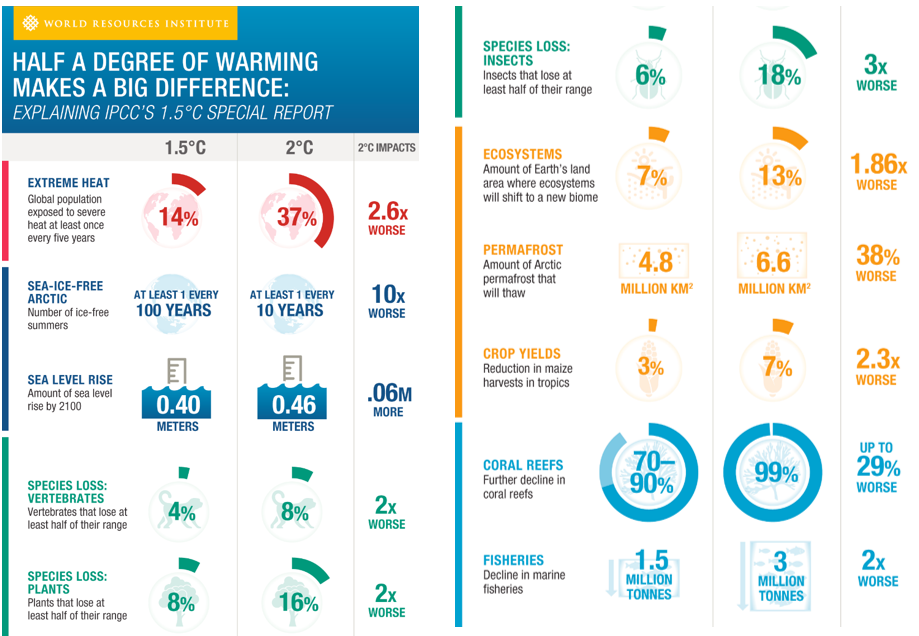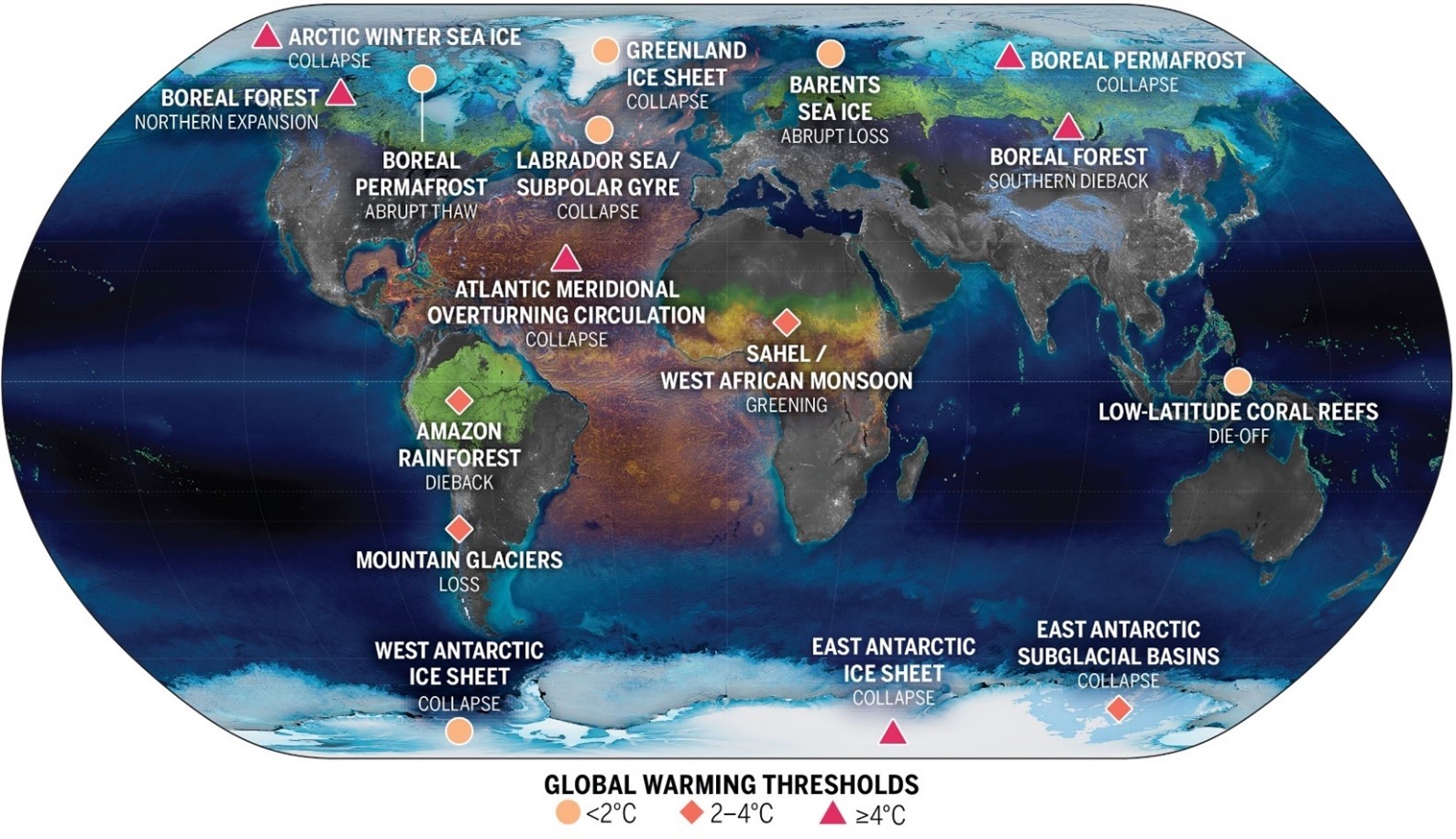The Urgency: Drop Everything and Act Now
To keep global warming to no more than 1.5°C, emissions need to be reduced by 45% by 2030 and reach net zero by 2050. But, commitments made by governments to date fall far short of what is required. Current national climate plans – for 193 Parties to the Paris Agreement taken together – would lead to a sizable increase of almost 11% in global greenhouse gas emissions by 2030, compared to 2010 levels. At current emissions trend, we will exhaust our carbon budget by 2032. Most scientists agree that we need to begin reducing carbon emissions RIGHT NOW.
Source: UN.org
While a 1- or 2-degrees celsius rise is meager when it comes to daily temperature changes, the difference becomes catastrophic when scaled to the level of the global climate.

Source: World resources institute
Climate Tipping Points are critical thresholds that, once crossed, tip a natural system into an entirely different state and lead to potentially irreversible, catastrophic impacts for the planet—including more warming. Climate Tipping points are closer than once thought. Exceeding 1.5 degrees Celsius of global warming could trigger several and lead to irreversible climate impacts. The Intergovernmental Panel on Climate Change (IPCC) notes that more than a dozen natural systems—from ice sheets to the Amazon rainforest—are at risk of “tipping.”
One example is the melting of the permafrost in the northern regions, which leads to increased greenhouse gas emissions, which in turn may also accelerate climate change.

Source: Climate Tipping points, ipcc.ch
“The enormity of global warming can be daunting and dispiriting. What can one person, or even one nation, do on their own to slow and reverse climate change. Good news is that the scientific community has identified the necessary solutions to stabilize global warming, each of which is challenging but feasible and, in some combination, could reduce greenhouse gas emissions to safer levels.”
Source: Scientific American
“Global warming is likely to more or less stop once carbon dioxide (CO2) emissions reach zero, meaning humans have the power to choose their climate future. At net zero levels, temperatures are expected to remain steady avoiding further catastrophic damages. Even if emissions of greenhouse gases were to suddenly stop, Earth's surface temperature would require thousands of years to cool and return to the level in the pre-industrial era. Timing is everything in the fight against climate change. There is a point beyond which climate change will become irreversible despite human efforts to reduce greenhouse gas emissions.”
Source: Carbonbrief.org